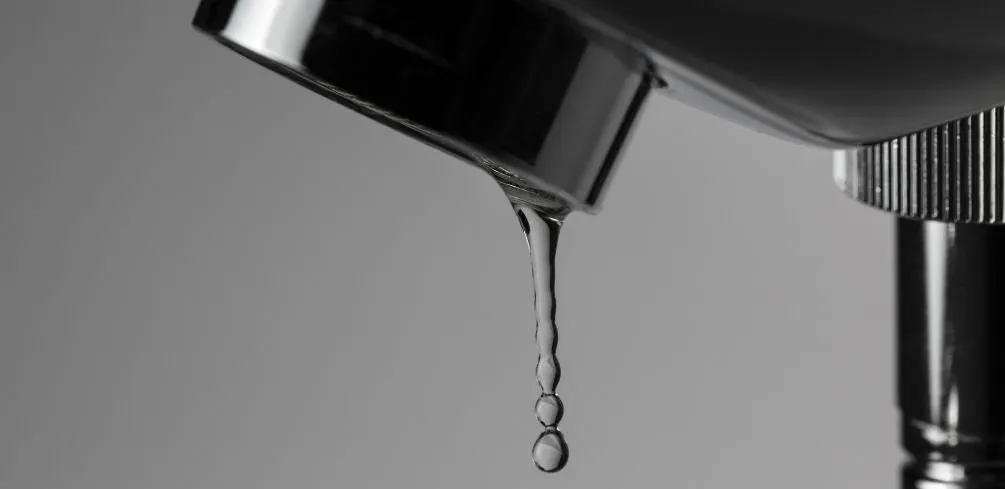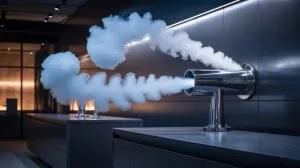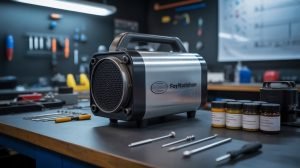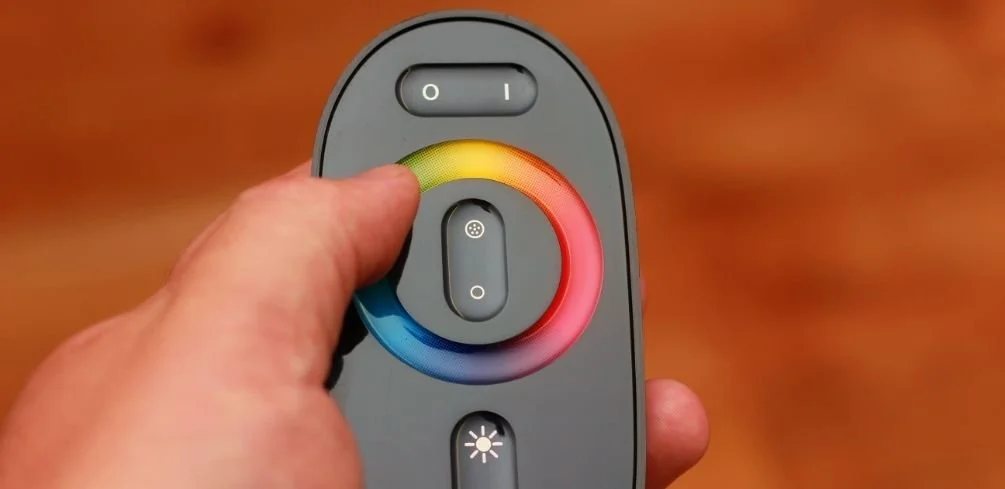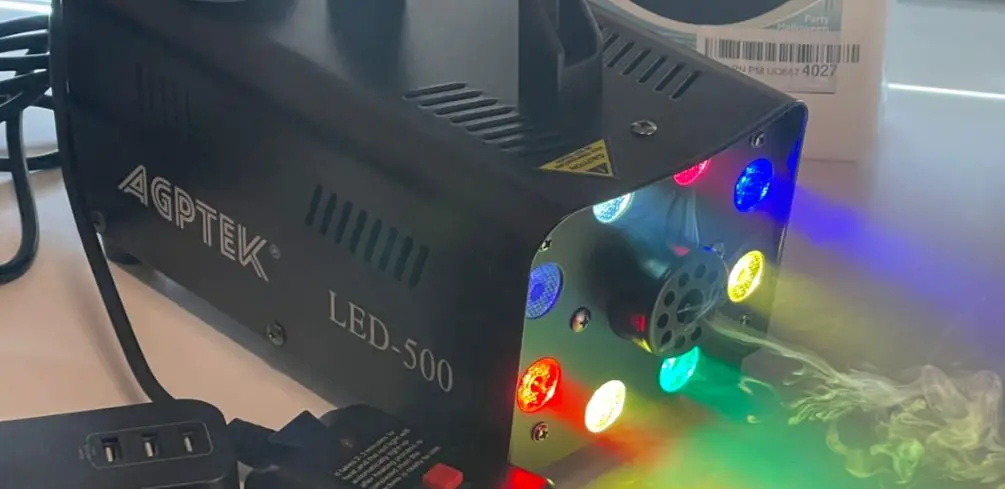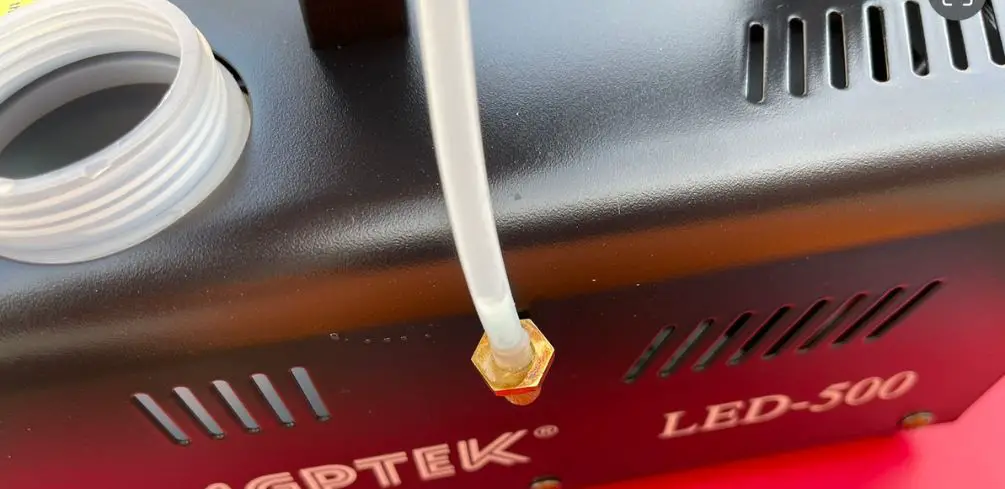Your fogger is leaking fog juice from the base mainly due to the poor fit and finish of the fog machines themselves. As a result, several leak spots emerge quickly after the initial use. However, the second inescapable difficulty is that the fog-filled bubbles tend to settle on the machine, resulting in moist spots on and around the machine’s surface.
In this post, we’ll take a look at some of the most frequent and easily accessible leak spots, as well as some repair options.
Fog Machine Leaks
On a fog machine, there are three common leak locations to look out for;
- The fog juice reservoir is located at the rear of the machine
- An air bubble generating container is connected to a fog juice container by a tube called a connecting tube.
- The opening in the container produces air bubbles.
The Fog Juice Reservoir Leak
First, lift the metal backing up and over the fill hole for the fog juice container to correct the problem. The indicator glass on several foggers is leaking fog, according to the reports received.
On the other hand, the indication window is just a hole in the metal that is pressed up against the plastic fog juice bottle.
Taking the metal backing with the indication glass completely off reveals that any leaks in that region are in the weak, thin plastic fog juice container itself, not the metal backing.
Consider the possibility that there are any leaks in the plastic fog juice bottle (especially along the seams that happen to run parallel to the fog juice indicator window). In this scenario, it is possible to cover the crack using caulk or some other permanent waterproof construction sealant.
Hot glue works great in the short term, but it does not adhere to moist plastic very well in the long term. For very small holes in the container, hot glue can be an option.
An Air Bubble Generating Container Leak
You may easily remove the little tube from either the fog juice container on the left or the air bubble container on the right by simply pulling it out.
Add a zip tie at the end of the tubing that connects to the jog juice bottle to avoid leakage there. If you open the fogger, you may discover that the connecting tube has entirely split from the air bubble container on the right.
In that case, it has most likely resulted in a gradual trickling leak from the air bubble container on the right.
Since the rear metal plate was designed to fit over the fog juice container hole during production, you may cause this disconnect to occur when you open the back of your fogger.
Taking the backplate off makes it possible for the fog juice container to come away from the connecting tube, and the tube itself is only connected to the air-bubble chamber by a weak adhesive that is difficult to see.
Because the tube is not firmly secured to the containers, it is almost certain that the tube will eventually separate from the containers. This appears to be a very prevalent problem with these machines.
Unfortunately, using a zip tie on the air bubble container side of the tube is not an option due to the limited area and acute angle of the tube’s interior.
In this case, hot glue does not work since the plastic tubing is moist and extremely non-porous, causing the glue to slip straight off and not connect with the plastic.
The first repair effort is applying liquid nails epoxy to the tube with a dropper. You might also try caulk or something similar that makes a strong watertight barrier when it comes into contact with plastic materials.
Using a strong epoxy for this repair is essential since reassembling the machine necessitates tugging and twisting the fog juice bottle back into position. If the patch isn’t robust enough, you’ll quickly reintroduce the leak when reassembling the vehicle afterward.
A leak from the Opening in the Container That Produces Air Bubbles
The container that produces the air bubbles is joined to the fog heater by a copper rod that runs through it. The rod is inserted into a tiny hole in the bottom left corner of the air bubble container on the right side.
The fogging mechanism works because the air bubble container absorbs fog juice into itself as the copper rod warms up, causing the fog to appear and disappear.
Since it draws in some fog juice while it is operating, this little hole in the air bubble container causes many leaks.
Any jolting or movement of the bubble fogger will result in the surplus fog juice leaking out of this hole and spreading over the bottom of the fogger if there is any fog juice in it at the time.
The hole in the air bubble container was purposefully created, although it’s a fairly shoddy piece of engineering.
Consequently, the best recommendation is that you only fill your fogger after you have it in its permanent seasonal placement and that you avoid filling it up all of the ways to the maximum capacity line. This prevents any surplus juice from making its way into the air bubble container on its own, as would otherwise happen.
Also, make every effort to empty the bubble fogger at the end of the season rather than allowing the fog juice to accumulate in the unit.
As soon as the unit has been running for a while, there will always be a small amount of remaining fog juice in the air bubble container, and there is no method to prevent leaking from the air bubble container. A word of caution: make sure your bubble fogger is constantly at the proper level.
Damaged Bubble Arm
The other major issue about these machines is that the bubble arm is not working properly. It is usually clear when this occurs, for example, when the fogger goes on, and the fan operates, but the arm never dips into the bubble fluid.
Another indication of a fractured arm is a loud noise coming from the arm that sounds like a clogged fogger is coming from the arm. Of course, in this instance, the arm is completely immobile as well as the body.
The inconsistency of arm movement moving down but not up suggests an issue with the gears.
You have broken gear if you can manually move the bubble arm up and down without encountering any resistance at all. Unfortunately, getting replacement equipment will most likely be difficult.
Conclusion
You can fix these problems; the other is just a result of a bad design in which the built-in fan does not push bubbles out far enough. Because of the poor quality of low-cost fog machines, they are frequently destroyed.
You should be able to simply restore the majority of this damage. If you notice the fog machine spitting liquid try this.
Please be careful and use at your own risk
None of the authors, contributors, administrators, or anyone else connected with Wild Fog, in any way whatsoever, can be responsible for your use of the information contained in or linked from these web pages.

